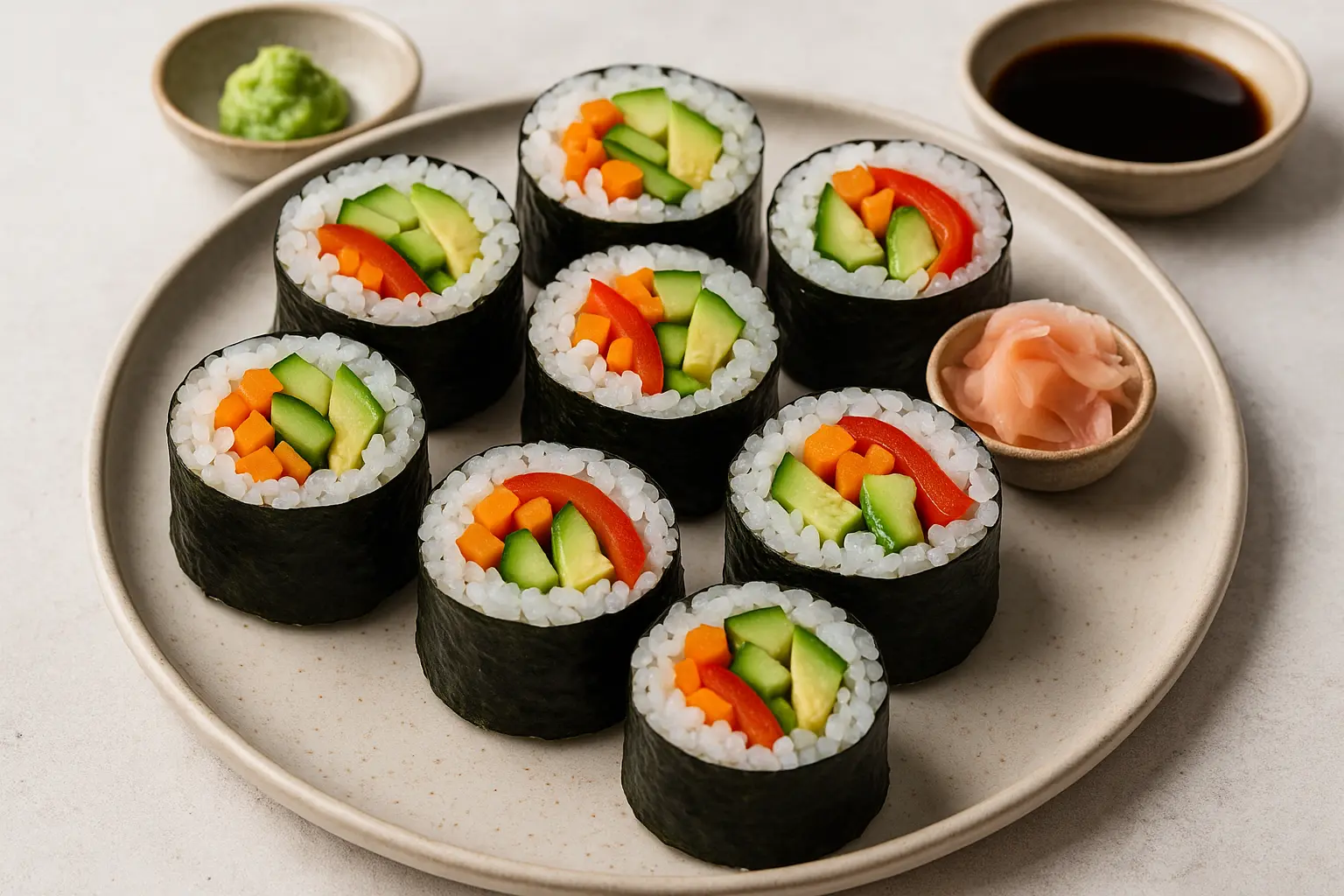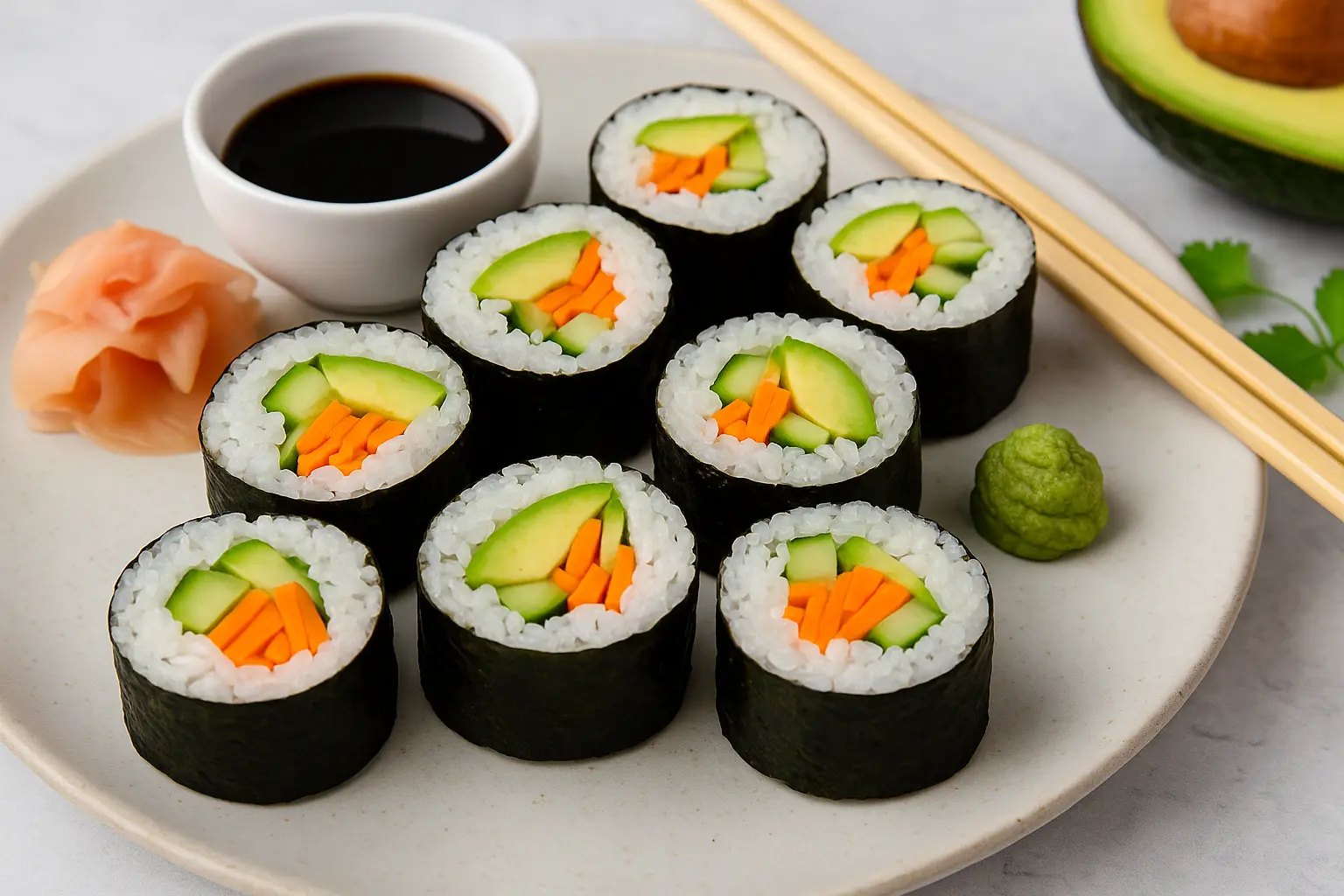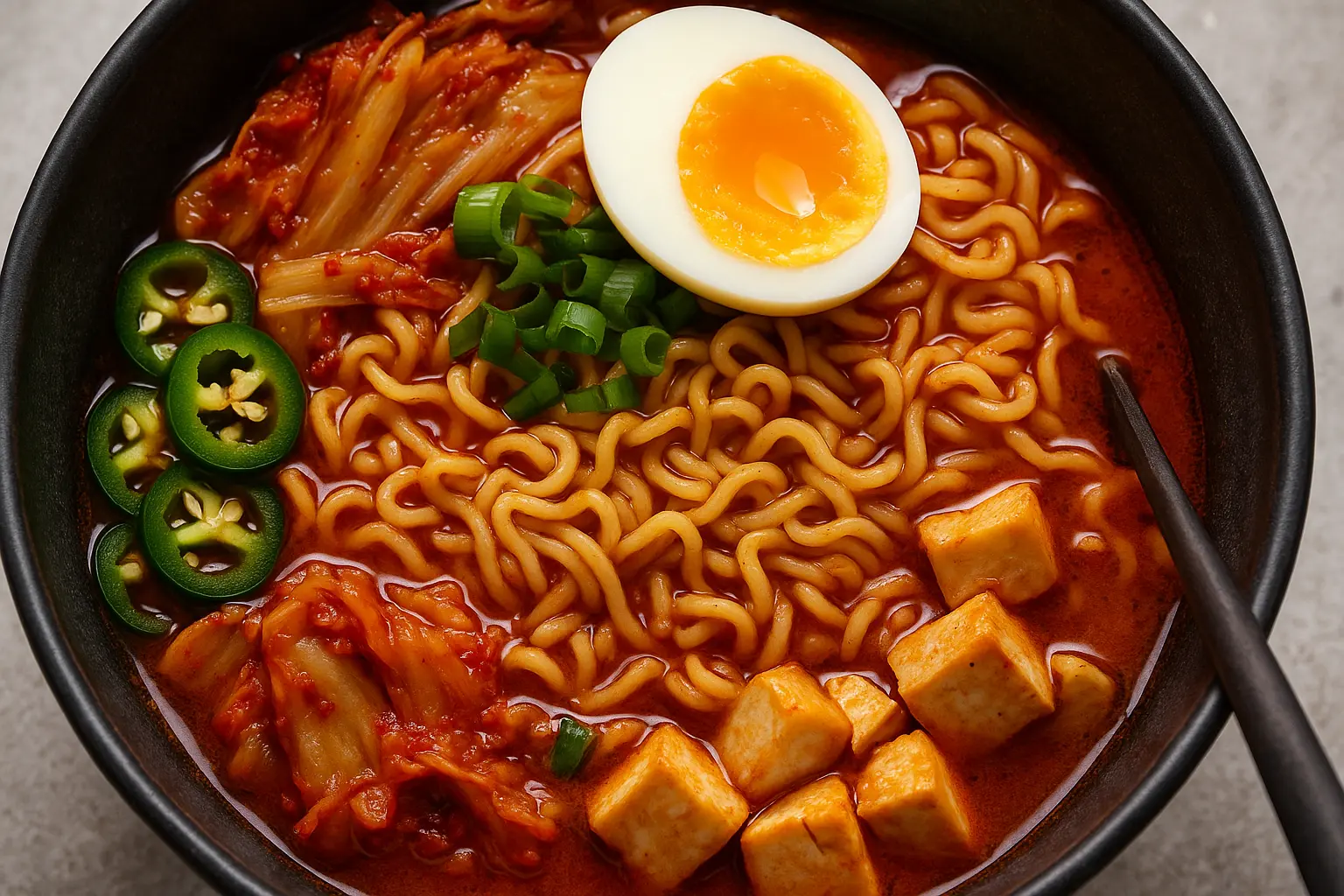Sushi has become a global favorite, and while many people think of it as raw fish wrapped in seaweed, the truth is that sushi is incredibly versatile. Vegan sushi rolls showcase the artistry of Japanese cuisine while making it accessible to those on plant-based diets. By focusing on fresh vegetables, flavorful sauces, and perfectly cooked rice, vegan sushi proves you don’t need fish or seafood to enjoy authentic flavors.
This guide is more than just a recipe—it’s a complete walkthrough. You’ll learn the cultural context of sushi, the essentials of sushi rice, rolling techniques, variations, serving ideas, and troubleshooting tips. Whether you’re a complete beginner or someone looking to refine your vegan sushi game, this blog will equip you with everything you need.

A Quick Dive into Sushi Culture
Sushi originated in Japan as a preservation technique where fish was stored in fermented rice. Over centuries, it evolved into the modern styles we know today—nigiri, sashimi, and rolls (maki). Vegan sushi borrows from the maki style, where vegetables, tofu, and creative fillings replace seafood.
In Japanese dining, sushi represents harmony: balance of taste, color, and texture. Vegan sushi continues this tradition with vibrant vegetables like cucumber, carrot, avocado, and bell peppers, alongside tangy pickled radish or umami-rich tofu.
Essential Ingredients for Vegan Sushi Rolls
1. Sushi Rice (Shari)
The foundation of any sushi roll is rice. Sushi rice is short-grain and slightly sticky, making it ideal for rolling. You’ll need:
- Short-grain Japanese rice (or sushi rice)
- Rice vinegar
- Sugar
- Salt
2. Nori (Seaweed Sheets)
Nori is dried seaweed that holds the sushi together. Choose high-quality, dark green nori sheets for best results.
3. Fillings
This is where creativity shines. Classic vegan fillings include:
- Vegetables: cucumber strips, avocado slices, carrot matchsticks, bell peppers, pickled radish (takuan).
- Plant proteins: marinated tofu, tempeh strips, chickpea mash, or vegan “egg” omelette.
- Extras: sprouts, lettuce, or seasoned mushrooms.
4. Condiments
Sushi isn’t complete without dipping and seasoning:
- Soy sauce or tamari (gluten-free option)
- Wasabi
- Pickled ginger (gari)
- Sesame seeds
Step-by-Step Guide to Making Vegan Sushi Rolls
Step 1: Cook the Sushi Rice
- Rinse 2 cups of sushi rice until water runs clear.
- Cook with 2¼ cups water in a rice cooker or pot.
- Once cooked, let it rest for 10 minutes.
- Mix with ¼ cup rice vinegar, 2 tbsp sugar, and 1 tsp salt while still warm. Spread onto a tray to cool.
Pro Tip: Use a wooden paddle or spoon to fold the rice gently—never mash.
Step 2: Prepare the Fillings
- Julienne cucumber and carrot into thin sticks.
- Slice avocado into thin strips.
- Pan-fry tofu with soy sauce and sesame oil until golden.
- Keep everything in separate bowls for easy rolling.
Step 3: Set Up Your Rolling Station
You’ll need:
- A bamboo sushi mat (makisu) wrapped in plastic wrap.
- A bowl of water mixed with a splash of vinegar to wet your fingers.
- Sharp knife for slicing rolls.
Step 4: Assemble the Sushi
- Place a sheet of nori on the bamboo mat, shiny side down.
- Spread a thin layer of rice, leaving a 2 cm border at the top.
- Add your choice of fillings horizontally across the middle.
- Roll tightly using the bamboo mat, pressing gently to seal.
- Slice into 6–8 pieces with a sharp, wet knife.
Variations of Vegan Sushi Rolls
1. Classic Avocado & Cucumber Roll
Simple, refreshing, and perfect for beginners.
2. Rainbow Vegetable Roll
Fill with carrot, beetroot, avocado, bell pepper, and cucumber for a colorful presentation.
3. Tofu Teriyaki Roll
Marinate tofu in teriyaki sauce before pan-frying and rolling with rice and avocado.
4. Spicy Chickpea Roll
Mash chickpeas with vegan mayo and sriracha for a creamy, spicy filling.
5. Mango & Avocado Roll
A tropical twist, pairing sweet mango with buttery avocado.
Serving Suggestions
- Arrange sushi rolls neatly on a platter with a small dipping bowl of soy sauce.
- Sprinkle sesame seeds or chopped chives on top for garnish.
- Pair with miso soup or edamame for a full Japanese-inspired meal.
- For parties, serve a mix of different rolls to create a colorful sushi platter.
Tips for Success
- Rice texture: Too dry, and the rolls won’t stick; too mushy, and they’ll fall apart.
- Knife work: Always use a sharp knife dipped in water.
- Rolling: Don’t overstuff—fewer fillings roll better.
- Storage: Sushi is best eaten fresh, but you can refrigerate for up to 24 hours wrapped tightly.
Nutritional Benefits of Vegan Sushi
Vegan sushi is light yet nutrient-rich:
- Avocado: Healthy fats and fiber.
- Vegetables: Antioxidants, vitamins, and crunch.
- Tofu/tempeh: Protein boost for a balanced meal.
- Nori: Packed with iodine and minerals.
Unlike seafood-based sushi, vegan sushi eliminates mercury risk and is fully cholesterol-free, making it heart-healthy.
Beyond Rolls: More Vegan Sushi Ideas
- Nigiri with tofu or eggplant: Slice marinated tofu or roasted eggplant and place over rice balls.
- Inari sushi: Sushi rice stuffed into seasoned tofu pouches.
- Sushi bowls (chirashi): Deconstructed version served in a bowl for quick meals.
Troubleshooting Common Mistakes
- Rice too sticky? Use slightly less water next time.
- Nori tearing? Keep your hands dry when handling.
- Rolls falling apart? Ensure rice isn’t spread too thick and fillings are aligned.
Conclusion: Sushi Made Simple at Home
Making vegan sushi at home is both fun and rewarding. What might seem intimidating at first becomes a calming, creative cooking ritual with practice. With just a few simple ingredients and a willingness to experiment, you can create rolls that rival your favorite Japanese restaurant.
Vegan sushi rolls are ideal for weeknight dinners, parties, or meal prep, offering a healthy, customizable, and delicious plant-based option.
So, grab your bamboo mat, slice some veggies, and start rolling!
Leave a comment
Your email address will not be published. Required fields are marked *




















